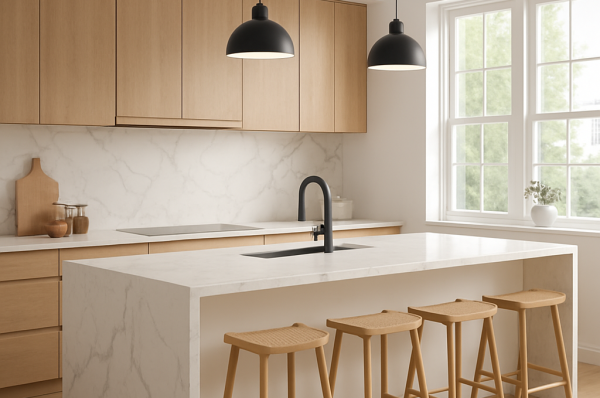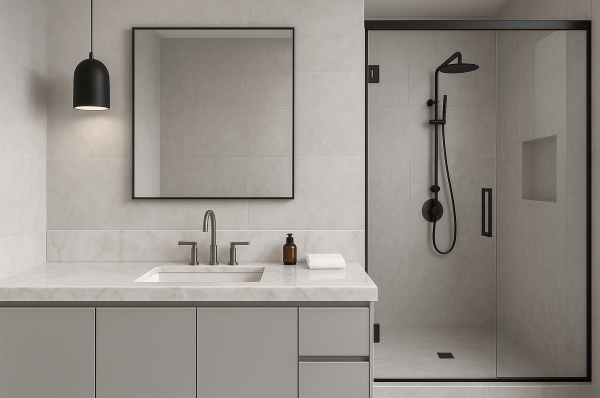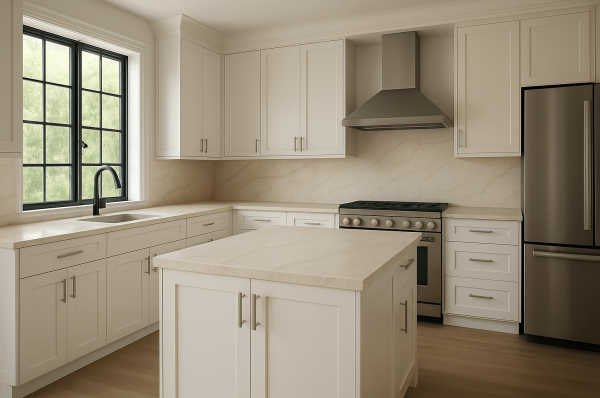Natural stone countertops bring unmatched beauty and durability to kitchens and bathrooms—but to keep them looking their best, proper sealing is key. Whether you’ve installed granite, quartzite, or marble, understanding the basics of sealing can protect your investment and maintain that fresh-from-the-showroom shine.
In this guide, we’ll walk you through the essential do’s and don’ts for sealing natural stone countertops, with expert tips on how to seal quartzite, best practices for sealing granite kitchen counters, and general stone countertop care.
✅ DO: Know Your Stone Type
Not all natural stones are created equal when it comes to porosity and sealing needs.
- Granite: Most types of granite are relatively low in porosity but still benefit from sealing every 1–3 years.
- Quartzite: Though often mistaken for marble, quartzite is harder and more resistant to scratches—but still should be sealed to prevent staining.
- Marble and Limestone: These are more porous and sensitive, requiring frequent sealing and gentle care.
📌 Tip: Always ask your stone supplier or fabricator whether your countertop was sealed at installation—and what maintenance schedule they recommend.
❌ DON’T: Use Harsh or Acidic Cleaners
Even sealed stone can be damaged by abrasive or acidic cleaning products. Avoid anything with vinegar, bleach, ammonia, or citrus.
Instead, use a pH-neutral cleaner specifically designed for natural stone to maintain your seal and avoid etching or discoloration.
✅ DO: Perform the Water Test
Not sure if your stone needs to be resealed? Try the water test:
- Pour a small amount of water onto the surface.
- Wait 15–30 minutes.
- If the water darkens the stone or absorbs quickly, it’s time to reseal.
This simple test works great for stone countertop care, especially with granite and quartzite surfaces.
❌ DON’T: Skip Prepping Before Sealing
Before applying a sealer, make sure the countertop is:
- Clean and dry
- Free from any residue or oils
- At room temperature
Applying sealer over a dirty surface can trap grime underneath and reduce the product’s effectiveness.
✅ DO: Learn How to Seal Quartzite Properly
If you’re wondering how to seal quartzite, here’s a quick guide:
- Choose a penetrating, solvent-based sealer made for natural stone.
- Apply evenly with a cloth or sponge.
- Allow the sealer to absorb (usually 15–30 minutes).
- Wipe off excess with a clean towel.
- Let the surface cure (usually 24 hours) before use.
💡 Pro Tip: Always follow the sealer manufacturer’s instructions for the best results.
❌ DON’T: Over-Seal
More isn’t always better. Applying too much sealer or sealing too often can lead to build-up, streaks, or a cloudy appearance—especially on granite kitchen counters.
If your stone doesn’t absorb water during the test, it doesn’t need sealing yet.
✅ DO: Keep Up with Routine Stone Countertop Care
Even with sealing, daily habits matter. To extend the life of your countertops:
- Use cutting boards to avoid scratches
- Wipe up spills quickly—especially wine, coffee, and oil
- Use trivets for hot pans
These small steps go a long way in protecting your stone and preserving its natural beauty.
Final Thoughts
Proper sealing is one of the most important aspects of stone countertop care. Whether you’re figuring out how to seal quartzite or checking on your granite kitchen counters, following these do’s and don’ts will help you maintain a pristine, high-end look for years to come.




